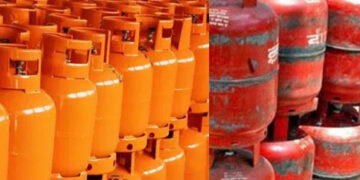Understanding the complexities behind these relapse rates is crucial. Factors such as previous treatment experiences, co-occurring mental health disorders, and environmental triggers play a significant role. Identifying these elements can help in mitigating risks and improving recovery outcomes. These statistics are encouraging, as they show that more people are recognizing the importance of seeking professional help for alcohol addiction. However, it is important to note that these rates still have room for improvement.
Relapse Rates and Recovery Outcomes Interpretation
The importance of investing in high-quality and appropriate treatment processes cannot be overemphasized, as insufficient treatment may lead to relapse 5. To analyze quantitative data, continuous data were summarized using means, and categorical data were summarized using frequencies and percentages. Data collected with open ended questions were manually categorized in Microsoft Excel. In 2023, provisional counts indicate that over 110,000 people in the United States died from drug overdoses. This figure encompasses a range of substances, including illegal drugs and prescription medications. Young people and family members are deeply affected by these tragic losses.
Time-to-Relapse Patterns
These participants reported better child–parent communication as a crucial part of the new life as sober. The participants described that staying clean and avoiding temptations required avoiding contact with old friends and people they had known in the substance use milieu. I found a sponsor who could help me work the steps, and I was consistent at attending one meeting a week.
- The financial toll of addiction is massive, driving healthcare expenditures, productivity losses, and criminal justice costs.
- It’s a sobering reminder of the chronic nature of addiction and a sign that you may need further treatment or aftercare support.
- Even considering the upfront costs of residential care or medication-assisted treatment, the long-term savings are substantial, both economically and in quality of life.
- It covers everything from alcohol and tobacco to marijuana, opioids, and mental health treatment.
- Maintaining sobriety requires ongoing effort, and relapse can be a part of the journey, but it does not mean failure.
When emotions feel too big, too fast or too constant
That’s why it’s so important to treat substance use and mental health together – one often feeds into the other. We’ll walk through the key trends in substance use and mental health, point out which groups are most affected, and look at how things have shifted over the past few years. The more we understand the scope of these issues, the better equipped we are to respond with compassion, awareness, and action. According to the 2023 NSDUH, among the 48.7 million people with a past-year substance use disorder, 55.8% (27.2 million people) also had a mental illness. While responses vary somewhat between healthcare providers, typically, sobriety lasting more than five years is considered long-term, while one to five years is considered sustained.
Relapse is a common concern for individuals in substance recovery, and understanding the likelihood of relapse can help individuals better prepare for their journey to sobriety. While some people may be able to achieve sobriety quickly and maintain it long-term, others may experience multiple periods of recovery and relapse throughout their lives. There are many things that can be done to reduce the risk of alcohol relapse. These include building a strong support system, learning healthy coping skills, practicing good self-care habits and developing a structured routine. Studies suggest that up to 90% of people who try to quit drinking will experience at least one relapse.
Prevalence of Co-occurring Disorders
However, research from SAMHSA’s 2020 National Survey of Substance Abuse Treatment Services does shed some light on the percentage of which ethnicities are being discharged from drug rehab centers. Because different states and regions face unique challenges, understanding geographic patterns illuminates how local contexts shape addiction. The most effective path often combines multiple approaches sobriety, relapse, and addiction recovery statistics in 2023 tailored to the individual. Learning from these statistics provides vital insights into better addressing and supporting those affected.
Nearly half of current drinkers said they binge drank—having several drinks in a short span of time. While relapse rates are around 40-60% early on, research shows this risk drops dramatically over time. After 5 years of continuous sobriety, a person’s risk of relapse is less than 15%, similar to the general population. A large-scale national survey on recovery found that among the millions of people in remission from a substance use disorder, more than half (54.1%) achieved it without ever receiving formal treatment.
- Medications like naltrexone and acamprosate are commonly utilized to minimize withdrawal symptoms and help maintain sobriety.
- It shows that recovery isn’t just possible—it’s happening every day, for millions of people.
- It’s about admitting when one is struggling and seeking help when needed.
- You could be spending an average of $200 to $300 a month on alcohol if you drank alcohol every day.
They provide essential social support that can significantly reduce the likelihood of relapse. A lack of supportive relationships can exacerbate feelings of isolation, increasing the likelihood of relapse. Surrounded by non-supportive or substance-using peers, recovering individuals may find it challenging to resist temptation. Conversely, strong social networks and consistent support play vital roles in maintaining recovery.
Substance-Specific Relapse Rates
In the same timeline, about 70% report achieving low-risk drinking. However, relapse rates can be as high as 80% during the first year, underscoring the challenges many face while trying to maintain sobriety. In the broader landscape, these statistics serve as a reminder that relapse, though common, is not the end of the road. An alcoholic can work towards recovery, but alcoholism is classified as a chronic condition that is treatable but not curable. Many individuals with Alcohol Use Disorder (AUD) can achieve long-term sobriety through various treatment options, including detoxification, inpatient and outpatient programs, and ongoing support systems. While less than 10 percent of people with alcohol addiction seek treatment, those who do often benefit from a combination of medical intervention and peer support.
Generally, only about 6.7% of those with AUD seek help annually, although approximately 70–80% of people who undergo treatment experience improved quality of life. If you leave drug and alcohol rehab with the idea that you are now cured of your substance abuse disorder, you are setting yourself up to relapse. Any time you struggle with your commitment to stay sober, you will feel overwhelmed with guilt, shame and fear, which could cause you to spiral back into addiction.
style=”display:none;”>





















































